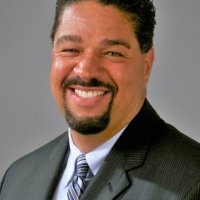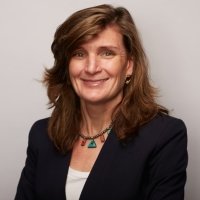Path to Prosperity: Empower, Educate, and Employ Youth to Realize the Demographic Dividend
In the course of development, most countries undergo a demographic transition. Health conditions improve and mortality rates decline, causing rapid population growth and a relatively high proportion of young people. Over time, if fertility declines, as it has in most places, growth slows and there is a period when the proportion of very young “dependents” shrinks in comparison to the working age population. This moment represents an opportunity for a “demographic dividend” – an economic boom as a comparatively large cohort of the total population moves through their most economically productive years.
“Young people themselves are hungry for a better future”
While countries vary widely in population age structures and fertility trends, many developing countries, particularly in Africa and Asia, are on the cusp of a potential demographic dividend, with a large generation of young people coming of age while fertility rates fall. But reaping the benefits of a demographic dividend is not guaranteed or automatic. How can countries fully capitalize on the potential for growth?
On December 8, more than a dozen experts gathered at the Wilson Center to exchange ideas at an all-day event sponsored by the United Nations Population Fund (UNFPA), the UN organization tasked with improving sexual and reproductive health, maternal health, and the wellbeing of young people.
“The size of the dividend will depend on how countries decide to invest in young people to realize their potential,” said Benoit Kalasa, director of UNFPA’s Technical Division. With proper investment, these generations have the power to drive change. “We know young people themselves are hungry for a better future,” said the Wilson Center’s Roger-Mark De Souza.
Panelists drew on what is known as the “3E policy framework” to help countries create the conditions for a demographic dividend:
Empower
- People, especially women and young girls, must be empowered to make the best choices for themselves and their families.
- Policies must ensure that women and couples have access to family planning services and have the rights and freedoms to make their own reproductive choices.
Educate
- The soon-to-be and already employed must be properly educated and prepared for future employment opportunities.
- Young women must be supported and given the same opportunities to succeed as their male counterparts.
Employ
- Viable employment opportunities must be created for the younger generation. While much of this will happen in the private sector, public policy will affect the level and quality of employment.
- Countries must focus on good governance and strong macroeconomic management to ensure well-functioning labor and financial markets.
More Than Just Family Planning
Empowerment includes expanding access to contraception and quality reproductive health services, elements that are key to reducing fertility rates. This is not only a matter of ensuring a basic human right but also an important prerequisite to the demographic dividend, as without a fertility decline, there will always be more young dependents, generation after generation. “Too many young women still do not decide when to marry, whom to marry, or how many children to have,” said Kalasa.
But empowering women and girls to make those choices for themselves will take more than simply offering family planning services, Kalasa said. Shifts in gender norms and attitudes – the idea that half the population deserves an opportunity to be as productive as the rest – are linked to the demographic dividend. Efforts to “change the mindset” have become a high priority in places like Rwanda, said UNFPA’s Jozef Maeriën, where comprehensive sex education covers not only issues of sexuality and contraception, but also gender roles and the rights of girls.
Understanding norms and attitudes that affect women and girls – attitudes on child marriage, for example, or gender-based violence – is critical to shaping policies and interventions that will transform them.
“We need to look at barriers that are keeping girls from school,” said Daniela Ligiero, vice president of girls and women strategy at the United Nations Foundation, a non-profit that supports U.S. commitments to the UN. “Sometimes this can be as simple as the time that is required for girls to fetch water for the family, or safety concerns around lighting,” she said. “We need to think of these things from the very beginning” of development interventions.
“The demographic dividend is about inclusive growth, not just economic growth”
The importance of a holistic approach to empowering girls was emphasized by Björn Andersson, chief of staff in the Office of the Executive Director of UNFPA. “By investing in a young adolescent girl’s education and health, and reducing the risk of early marriage and early pregnancy, she has greater opportunities to find a path out of poverty, lead a healthier life and become an asset to her family, community and society,” he said.
Panelists also highlighted the need for inclusiveness in policies and programs related to education and employment. Up to 15 percent of the global population lives with disabilities, said Stephanie Ortoleva, founder and president of Women Enabled International. Disabled women face a “double bind” in places where stereotypes and attitudes hamper their educational or occupational opportunities because of their gender and disability. Leaving such a significant portion of the population out, she said, means missing a significant economic opportunity.
Jagdish Upadhyay of the United Nations Population Fund, concurred. “The demographic dividend is about inclusive growth, not just economic growth,” he said. “If it’s not inclusive, achieving the demographic dividend will be difficult.”
Understanding Education as an Institution
There are different approaches to looking at the benefits of education in the context of the demographic dividend, said Parfait Eloundou-Enyegue of Cornell University. In the classic approach, there are the inputs and outputs of education – for example, changes in fertility correlate to educational outcomes, and educational outcomes then correlate to work and earnings.
A different approach is to view education as an institution that interacts more dynamically with the institutions of family and work. We ought not to view demographic transitions simply as changes in family size, but rather as a social transformation in families, education, and work, Eloundou-Enyegue said. For instance, as families become smaller and as educational opportunities increase, there may be changes in the norms of parenting and parental expectations of children that affect their experiences in school. Those experiences in school then feedback to preferences and decisions about family size, as well as shape expectations for the transition from school to work.
Countries can respond to such changes, Eloundou-Enyegue said, by shaping education and employment opportunities accordingly. Schools can take a more proactive role in supporting the transition from school to work, focusing on skills that are most important to the kind of students they are seeing (e.g., those from smaller families) and the kinds of economic opportunities that are likely to arise for them.
Ellen Starbird, director of USAID’s Office of Population and Reproductive Health, echoed the need to view these linkages comprehensively and dynamically in order to help young people make decisions about their future. “Young people ask themselves, ‘How many children do I want? How do I finish my education? What kind of job opportunities are there? What do I want to do with my life?” she said. “Having information to make those choices is really important.”
The challenge is to understand how the institutions of family, education, and work interact together, said Eloundou-Enyegue.
Quality, Not Just Quantity of Work
Advising policymakers on decisions that affect the relationship between family, education, and work in positive ways requires quality data, especially when working with influential institutions such as finance and economic ministries.
In the case of family life and empowerment in particular, high-quality, comprehensive, and gender-disaggregated data is critical, said Upadhyay. For example, being able to illustrate economic impacts of maternal death can be powerful in persuading ministers that investing in reproductive health programs is both right and smart.
And just as the quality of data is vitally important in supporting a demographic dividend, so too is the quality of job opportunities. Nancy Donaldson of the International Labour Organization, a UN organization that promotes cooperation between the “tripartite” of business, labor, and government, described four pillars of “decent work” as fundamental to optimizing the inclusive growth opportunities of the demographic dividend:
- An economy that promotes jobs by generating opportunities for investment, entrepreneurship, skills development, job creation, and sustainable livelihoods
- A work environment that guarantees rights at work for women and men, and in particular disadvantaged or poor workers
- Jobs that extend social protection, promoting both inclusion and productivity by ensuring that women and men enjoy working conditions that are safe, allow adequate free time and rest, take into account family and social values, provide for adequate compensation in case of lost or reduced income, and permit access to adequate healthcare
- Work that promotes social dialogue, involving strong and independent workers’ and employers’ organizations that can avoid disputes and build cohesive societies
Understanding the complexities of labor migration – both domestic and international – is an increasingly important aspect of fostering decent work for all. “We now need to look more holistically at the job market and try to understand how the market is failing our audience,” said Karl Hofmann of Population Services International, a global health non-profit based in Washington, DC. “This forces us to look at how government, the private sector, and other institutions are working together.”
Identifying What Works
Throughout the day, panelists spoke of a growing imperative for deeper understanding of demographic, educational, and economic trends; data-driven, long-term planning; and close coordination among institutions.
Above all, the need for pragmatism is paramount. “We tend to get abstract” when discussing concepts like the demographic dividend, said Hofmann. “But when you contemplate the hundreds of millions of people entering workforce in Africa, it’s really important to take into account those numbers and try to drive toward pragmatic solutions.”
Such pragmatic solutions can begin with prioritizing interventions that offer the biggest “bang for the buck,” said Ligiero, pointing toward programs that support girls’ education and reproductive health and rights. Where such interventions are culturally and politically sensitive, strong evidence is paramount to overcoming objections, said Latif Dramani of the Senegal’s University of Thies.
Involving those who are most heavily impacted by such interventions is instrumental in fostering lasting change. Today’s global generation of young people is the largest ever and in some countries makes up more than half the population.
“We need to recognize and promulgate the notion that we cannot succeed unless we bring in voices of women and girls, young people, and marginalized groups,” said Carla Koppell, senior coordinator for gender equity and women’s empowerment at the U.S. Agency of International Development. “This requires a willingness to broaden voices to engage in decision making and allocation of resources…this is the right and smart thing to do.”
Event Resources:
Kathleen Mogelgaard is a writer and analyst on population and the environment, and a consultant for the Environmental Change and Security Program.
Front Page Photo Credit: Two young people in northern Rwanda, courtesy of flickr user Graham Holliday.
Speakers

Vice President, Sustainable Markets, Pact

Hosted By

Environmental Change and Security Program
The Environmental Change and Security Program (ECSP) explores the connections between environmental change, health, and population dynamics and their links to conflict, human insecurity, and foreign policy. Read more


Global Women's Leadership Initiative
The Global Women’s Leadership Initiative has hosted the Women in Public Service Project at the Wilson Center since June, 2012. The Women in Public Service Project will accelerate global progress towards women’s equal participation in policy and political leadership to create more dynamic and inclusive institutions that leverage the full potential of the world’s population to change the way global solutions are forged. Read more

